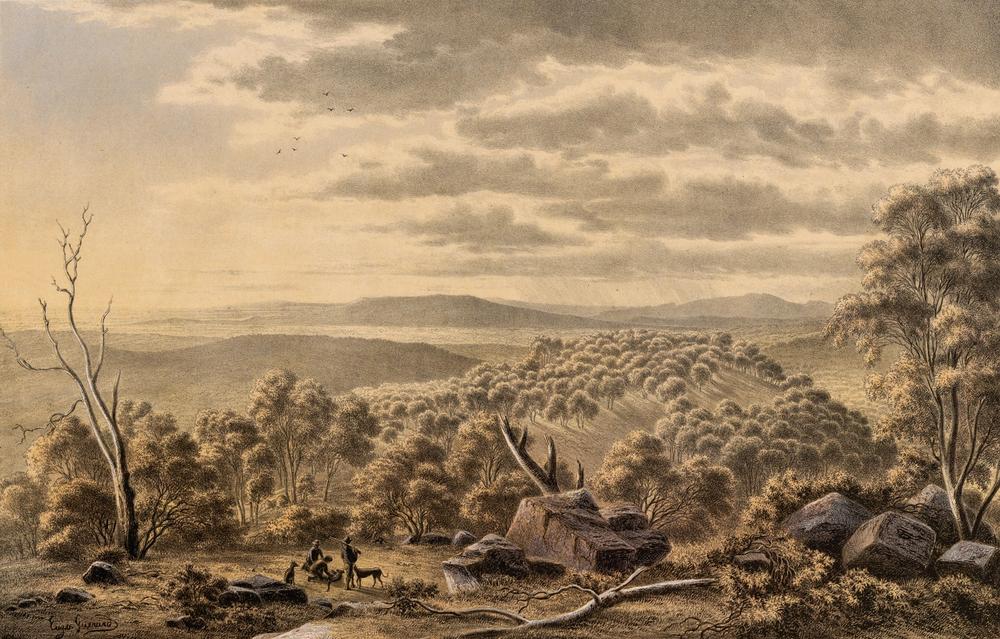
1866 - View from the Summit of Mount Lofty, South Australia
Eugene von Guerard
Coloured lithograph (Plate XVII in Australian Landscapes)
H 39.2 x W 58.9 cm
The University of Tübingen
libraryofnature.com
Bioregion: Flinders Lofty Block (9% protected)3
Temperate to arid Proterozoic ranges, alluvial fans and plains, and some outcropping volcanics, with the semi arid to arid north supporting native cypress, black oak (belah) and mallee open woodlands, Eremophila and Acacia shrublands, and bluebush/saltbush chenopod shrublands on shallow, welldrained loams and moderately-deep, well-drained red duplex soils. The increase in rainfall to the south corresponds with an increase in low open woodlands of Eucalyptus obliqua and E. baxteri on deep lateritic soils, and E. fasciculosa and E. cosmophylla on shallower or sandy soils.4
Eugene von Guerard5
Johann Joseph Eugene von Guérard (17 November 1811 – 17 April 1901) was an Austrian-born artist, active in Australia from 1852 until 1882. Known for his finely detailed landscapes in the tradition of the Düsseldorf school of painting, he is represented in Australia's major public galleries, and is referred to in the country as Eugene von Guerard.
In 1852 von Guerard arrived in Victoria, Australia, determined to try his luck on the Victorian goldfields. As a gold-digger he was unsuccessful, but he did produce a large number of intimate studies of goldfields life, quite different from the deliberately awe-inspiring landscapes for which he was later to become famous.
By the early 1860s von Guerard was recognised as the foremost landscape artist in the colonies, touring Southeast Australia and New Zealand in pursuit of the sublime and the picturesque. He is most known for the wilderness paintings produced during this time, which are remarkable for their shadowy lighting and fastidious detail. Indeed, his view of Tower Hill in south-western Victoria was used as a botanical template over a century later when the land, which had been laid waste and polluted by agriculture, was systematically reclaimed, forested with native flora and made a state park.
Artwork of species found nearby

See more »
1854 - Superb Fairywren
Elizabeth Gould

See more »
1854 - Scarlet robin
Elizabeth Gould

See more »
1854 - Superb Fairywren
Elizabeth Gould

See more »
1854 - Rose robin
Elizabeth Gould

See more »
1854 - Splendid Fairywren
Elizabeth Gould

See more »
1854 - Eastern Yellow Robin
Elizabeth Gould